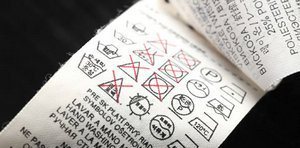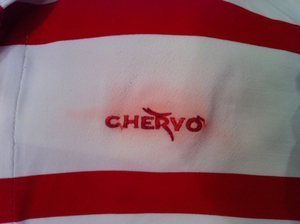No matter how expensive a thing is, improper washing can change it beyond recognition or even ruin it. In order to avoid this, manufacturers print graphic symbols on the labels of their products - recommendations for caring for each specific model, taking into account the fabric, style features, availability of accessories, etc.

Learning signs for washing
This block of graphic symbols is the most popular and elements from it can be found on almost any factory item.
By following the recommendations for washing products, you can significantly extend their service life and maintain an attractive appearance for a long time.
The most common modules are the following:
- basin with water - machine washable; sometimes the symbol indicates the optimal temperature for washing, for example, a bowl of water and the inscription “30”;
- crossed out basin with water - the item cannot be washed in a machine, only dry cleaning is allowed; element is very rare;
- basin with water and a hand symbol - exclusively hand wash at a temperature not exceeding 40C, optimal level - 30C;
- basin with one horizontal stripe at the bottom - gentle washing mode;
- basin with two horizontal lines - delicate wash for especially thin, openwork fabrics.

Symbols for spinning and drying
The graphic elements from this block are visually similar to each other. The most popular of them:
- washing machine drum (circle inscribed in a square) - the product can be dried and wrung out as usual;
- drum with one horizontal strip - a gentle spinning and drying mode is recommended;
- drum with two horizontal stripes - a gentle/delicate spinning and drying mode is required;
- drum with a point/dots - an element with one point - drying at low temperature, with two - at medium, three - drying at high temperature is acceptable;
- crossed out drum - the product cannot be wrung out;
- rectangle - automatic drying is allowed;
- envelope - dry the product unfolded;
- rectangle with vertical strokes - drying in a vertical position;
- rectangle with a horizontal stroke - drying in a horizontal position;
- rectangle with diagonal strokes - drying in the shade is recommended;
- crossed out rectangle - the product cannot be dried using traditional methods.

Signs indicating conditions for ironing products
Following the recommendations from this block will allow you to quickly, efficiently and carefully smooth out wrinkles on the fabric and bring the product into shape after washing and drying. The following images are used:
- iron - ironing is allowed on standard modes;
- crossed out iron - ironing in manual or automatic mode is prohibited;
- iron with dots - with one - you can iron at a maximum temperature of 110C (nylon, nylon, viscose), with two - up to 150C (polyester, wool, natural silk), with three - up to 200C (linen, cotton);
- an iron with a crossed out steam sign - it is not recommended to steam the product.

Icon definitions for bleaching and dry cleaning
The signs in this block belong to a special category of procedures for caring for delicate items. Most often, the following graphic symbols are found on clothing tags:
- isosceles triangle - the product can be bleached;
- crossed out isosceles triangle – bleaching agents cannot be used;
- an isosceles triangle with diagonal strokes - the item can be bleached, but without the use of chlorine-containing preparations;
- circle - the product must be dry cleaned;
- circle with the letter A inscribed - dry cleaning with any type of solvent is allowed;
- circle with the letter P inscribed - dry cleaning with ethylene chloride, hydrocarbon, monofluorotrichloromethane;
- circle with the letter F inscribed - dry cleaning with hydrocarbons or trifluorotrichloromethane.
There are also the last two symbols with a horizontal line at the bottom of the images - they regulate a gentle method of processing the fabric, limiting the ingress of water onto the product, and strict control of temperature indicators.

By paying attention to the symbols on the label of the products you purchase, you will protect yourself from unpleasant consequences associated with an incorrectly selected washing mode.
They are quite simple and eloquent, so remembering them is not difficult and very useful.









